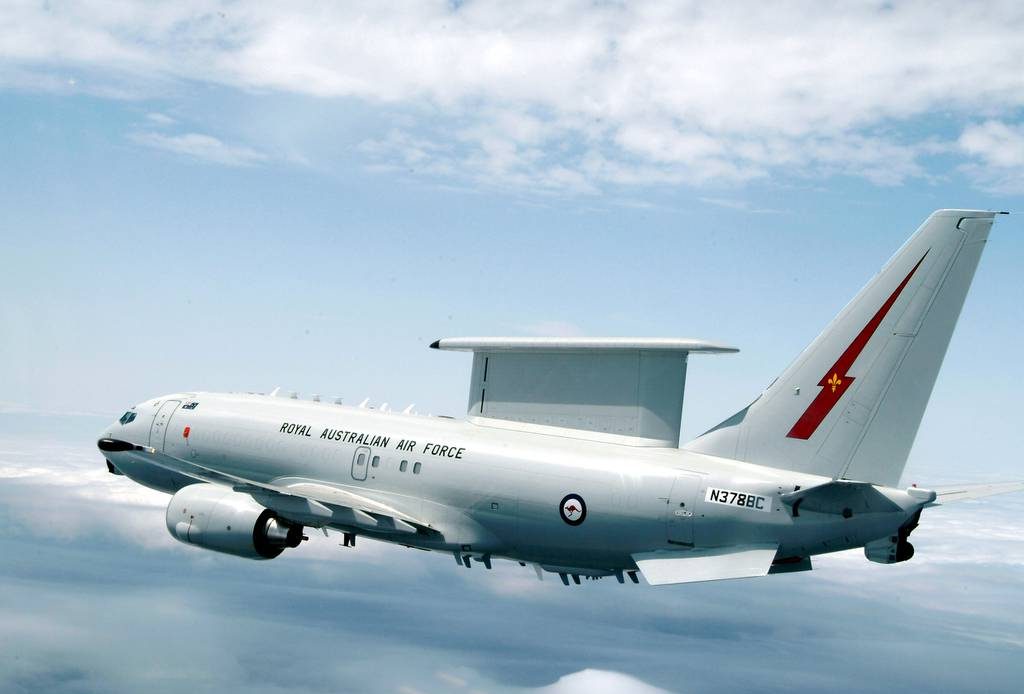
RAF FAIRFORD, England — The Air Force has reached an agreement with Boeing to build the first rapid prototype E-7 battle management aircraft, Air Force Secretary Frank Kendall told reporters here over the weekend.
The terms of the contract are not yet settled, but should be wrapped up next month, Kendall said at the Royal International Air Tattoo air show. The completion of this deal would resolve months of complicated negotiations between the Air Force and Boeing stemming from the service’s special requirements for its version of the E-7.
The Air Force in 2022 chose the E-7 to replace its aging E-3 Sentry airborne warning and control system, or AWACS, fleet. The service plans to buy 26 E-7s from Boeing by 2032, and awarded Boeing a $1.2 billion contract in February 2023 to start working on them.
Read Also: Air Force to buy E-7 to replace AWACS
Ultimately, Kendall said, the Air Force wants to have a combination of E-7s and space-based satellites monitoring battlefields and the airspace above, providing command and control, and targeting enemy forces. Until the E-7 fleet is ready, he said, the service plans to hold on to some AWACS to bridge the gap.
Australia already flies the E-7, which it calls the Wedgetail, and Boeing has deals in the works with the U.K. and other nations.
But the Air Force said it needs a modified design for its E-7 to meet U.S. satellite communication, military GPS and cybersecurity as well as program protection requirements.
Andrew Hunter, the service’s acquisition chief, said in February that the Air Force originally thought it was buying an E-7 that was not far off from the U.K’s version. However, Hunter said, the Air Force’s requirements turned out to require a far greater level of one-time engineering than originally anticipated.
This drove up the potential price and made negotiations tricky for months, Kendall told Defense News in an exclusive June 28 interview at the Pentagon.
“They’ve been hard,” Kendall said of the negotiations. “There are some reasons for the price to go up, but the degree to which it was going to go up originally was unacceptable.”
Kendall said in June that while the Air Force is increasingly moving to space-based capabilities for intelligence, surveillance, reconnaissance and targeting, it still wants to have the E-7 as an airborne component for the near future.
“Having some redundancy and getting to a place where we have more confidence in the space layer is going to take some time,” Kendall said in June. “There’s some good technical reasons to have a mix of capabilities here. … I think we’re going to need [the E-7]. I’d like to keep it funded.”
Kendall said Saturday that the Air Force brought in Shay Assad, the Pentagon’s former director of defense pricing, to negotiate with Boeing and bring the deal home. He said the Air Force and Boeing have arrived at a “reasonable price point” on the plane.
Hunter thanked Assad for his assistance in landing the deal, but also credited Boeing and its suppliers.
“They did really buckle down and get their pencils out and sharpen them and do a good job to bring the cost of the rapid prototyping program down,” Hunter said. “That’s what we asked, and that’s what they did.”
These improvements will ultimately pay off for Boeing, Hunter said, as there is a considerable market among NATO nations and other partners for the E-7 in the future.
“The business case was there for them,” Hunter said. “There are some critical design updates … [on] the overall structure of the mission systems, that are going to lay the foundation for the capability going forward. That’s a big market for industry.”
Author: Stephen Losey
Source: DefenseNews



